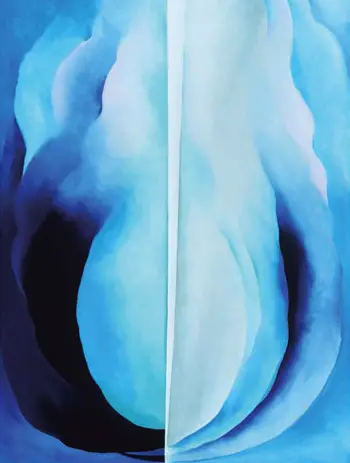Superficially, the work has the appearance of a watercolour, normally executed against a white or pale backdrop. But this painting, from the deepest tones to the most delicate shades, is rendered in oil on canvas. The delicate colours are achieved by mixing the oil paint very thinly and sweeping the pigments across the canvas with broad brushes.
Two narratives underlie the imagery in this painting. A flower-like form occupies the entire canvas, palest in the centre and deepening around the edges, so that that the form looms towards the viewer as rotund and substantial as any growing bud. A pale division runs roughly down the centre of the work, reminding the viewer that though life forms are crudely symmetrical, even the most perfect organism has variations on either side.
Alternatively, the blossom could be interpreted as a pregnant abdomen with a pair of maternal arms encircling its underside. Whichever interpretation the viewer favours, the overall narrative is life and fertility. The symmetry in the painting and the cool, blue palette echo the execution of her work, Lake George. However, O'Keeffe executed several of her more famous paintings in very warm colours, such as Red Hills and Bones (1941), a landscape in glowing reds and oranges, and the equally sultry Oriental Poppies (1927).
As with the majority of O'Keefe's works, Abstraction Blue fits into the abstract expressionist category, possibly influenced by the highly-coloured works of contemporary expressionist artist, Wassily Kandinsky. In addition, O'Keeffe drew inspiration from the rock and plant formations of her native Wisconsin, absorbing the spectacles of sunrise and sunset, of growing organisms and dead matter, to create the forms that became the signature of her work. Surrealism inspired O'Keeffe also, which is why the image appears to stand midway between a flower bud swollen with seed and a human abdomen about to produce new life. Today, viewers can see the painting in the Museum of Modern Art, in New York.
